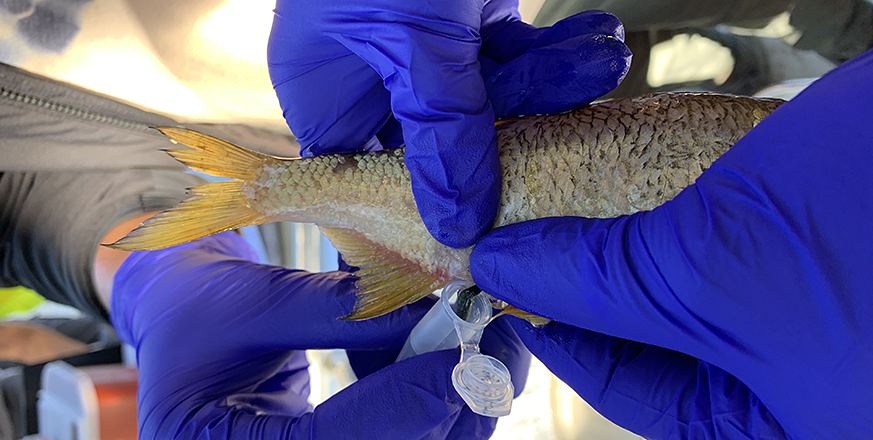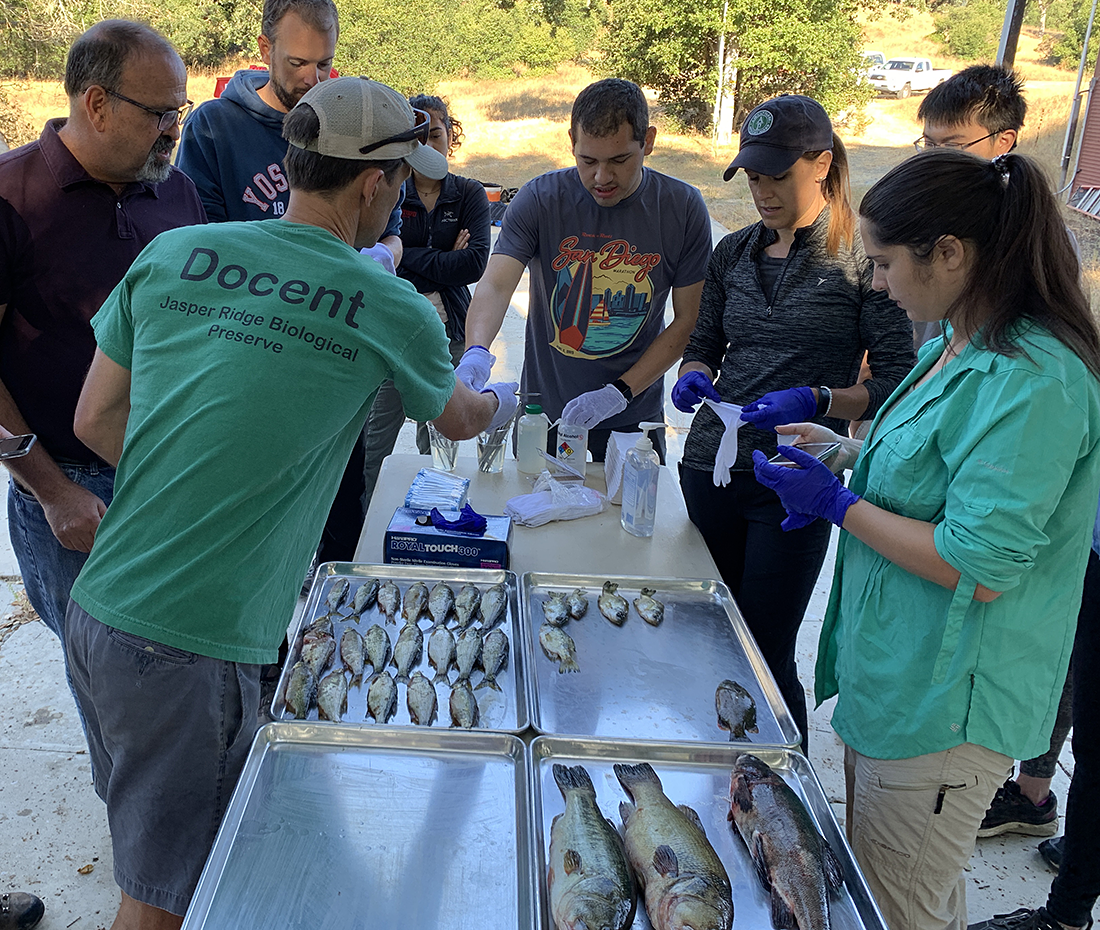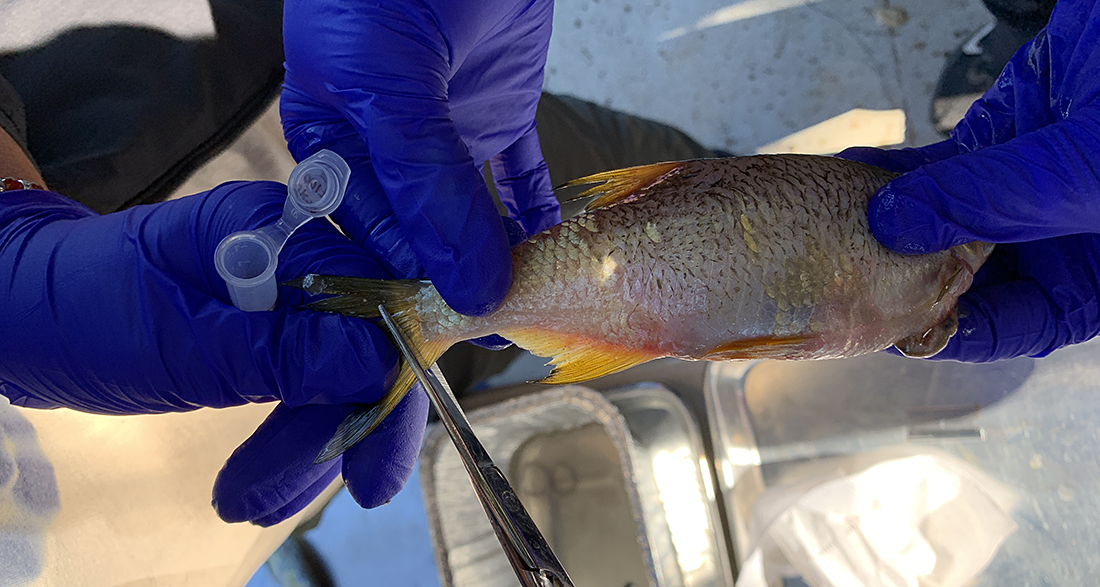Searsville Reservoir Non-native Fish Control and Water Lowering

Recently, staff at Stanford and AECOM completed two days’ worth of non-native fish control and sampling from Searsville reservoir at Jasper Ridge Biological Preserve. This occurred over a time when the water levels have also been dropped for a number of reasons, one of which was to potentially aid in the fish capture from a smaller volume of water. Photo at top: Fish gut sample - Hadly Lab members taking gut samples, for diet analysis, from the euthanized non-native fish being removed from the Searsville Reservoir.
There is a large presence of non-native fish species which have accumulated over the decades, a result of a number of introductions, many from the dumping of pet aquarium fish into the waterways. The three different non-native Lepomis species have also hybridized in reservoir. The capture primarily involved the use of different types of nets deployed from a boat launched onto the reservoir. The Hadly lab took the opportunity to preserve whole fish samples for future research. The final tally was 83 whole fish, representing one native fish species (Orthodon microlepidotus Sacramento blackfish), 8 non-native species, and a number of Lepomis hybrids (see species list below). We took 200 fin clips of non-native fish removed from the reservoir. These samples will be available for research into the future, which could include understanding the species composition of native versus non-native, distribution of functional traits, feeding ecology of these species by looking at gut contents and hybridization of the Lepomis species found.

Fish sampling group - Alan Launer, Associate Director of Conservation Planning at Stanford helping the Hadly lab members with fish identifications for the sampling effort.
The lowering of the reservoir went on for several reasons and started after the reservoir stopped spilling in early July. The water level was actively dropped to about 7.5 feet below the spillway, which it reached this week, and has now been stopped. We expect the water level to continue to drop slightly via seepage and natural evaporation. Other than to potentially aid in the fish removal, some of the questions associated with dropping the reservoir level include: a) should some of the water be needed during summer months in the future, how long does it take to lower the levels and what impacts does that have on the system; b) will the quality of water at lower levels still support fish; c) given a lower level of water how quickly does natural loss of water reduce the resultant level; d) how linked are the water levels in the wetland forest, middle and upper reservoirs with Searsville; e) during low water levels, does the vegetation start covering all the open water or retreat at all? To answer some of these questions the water levels and conditions at Searsville will be checked on a regular basis, and we hope to get some interesting information about the relationship between the reservoir’s water level and the ground water in the associated forest.

Fish fin clip - Hadly Lab members taking fin clip samples, for genetic testing, from the euthanized non-native fish being removed from the Searsville Reservoir.
Native Fish
Orthodon microlepidotus Sacramento blackfish
Non-native Fish
Ameiurus nebulosus brown bullhead
Gambusia affinis mosquitofish
Lepomis cyanellus green sunfish
Lepomis macrochirus bluegill sunfish
Lepomis microlophus redear sunfish
Lepomis hybrid Hybrid sunfish
Micropterus salmoides largemouth Bass
Notemigonus crysoleucas golden shiner
Pomoxis nigromaculatus black crappie
Photo Credits: Jorge Ramos



